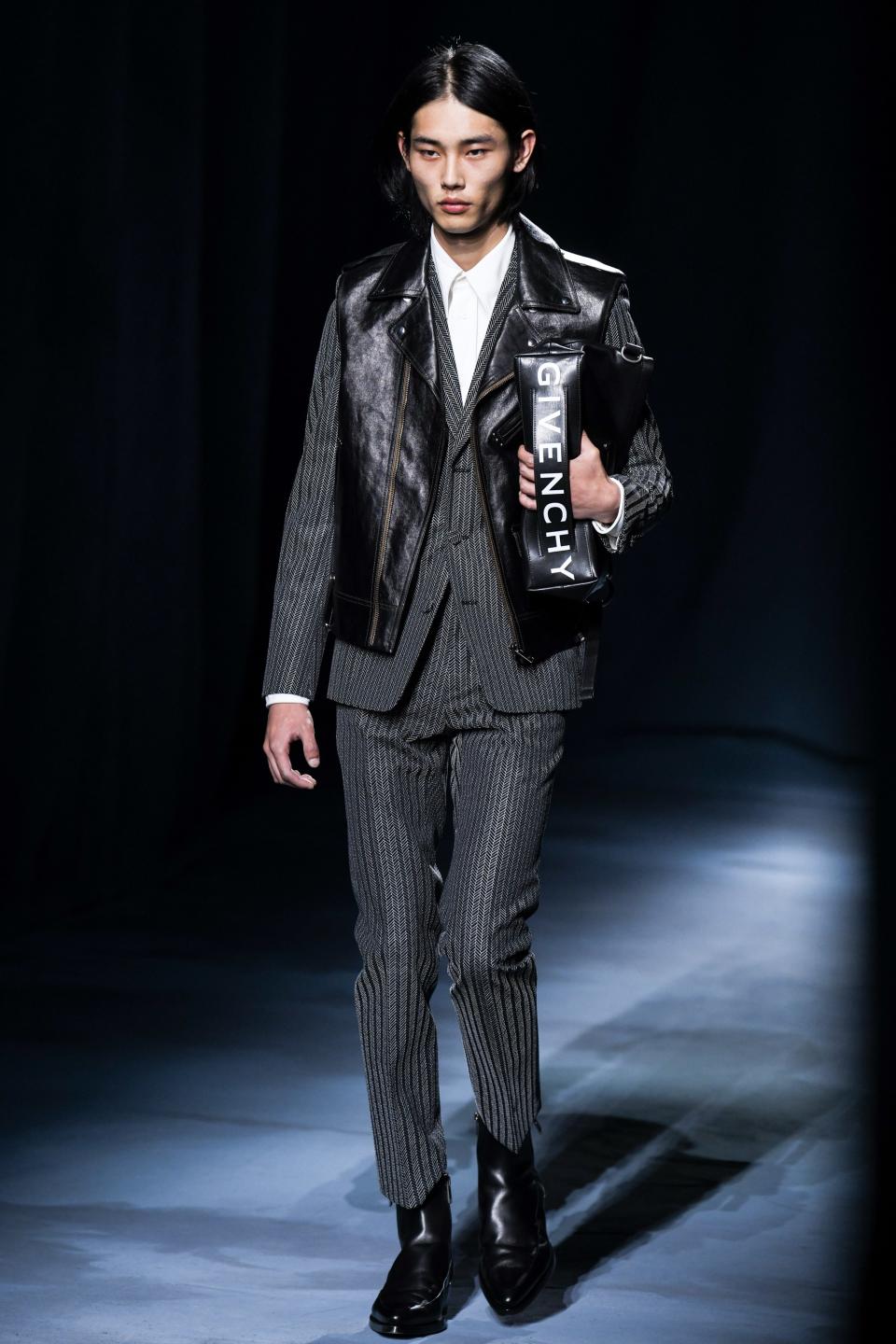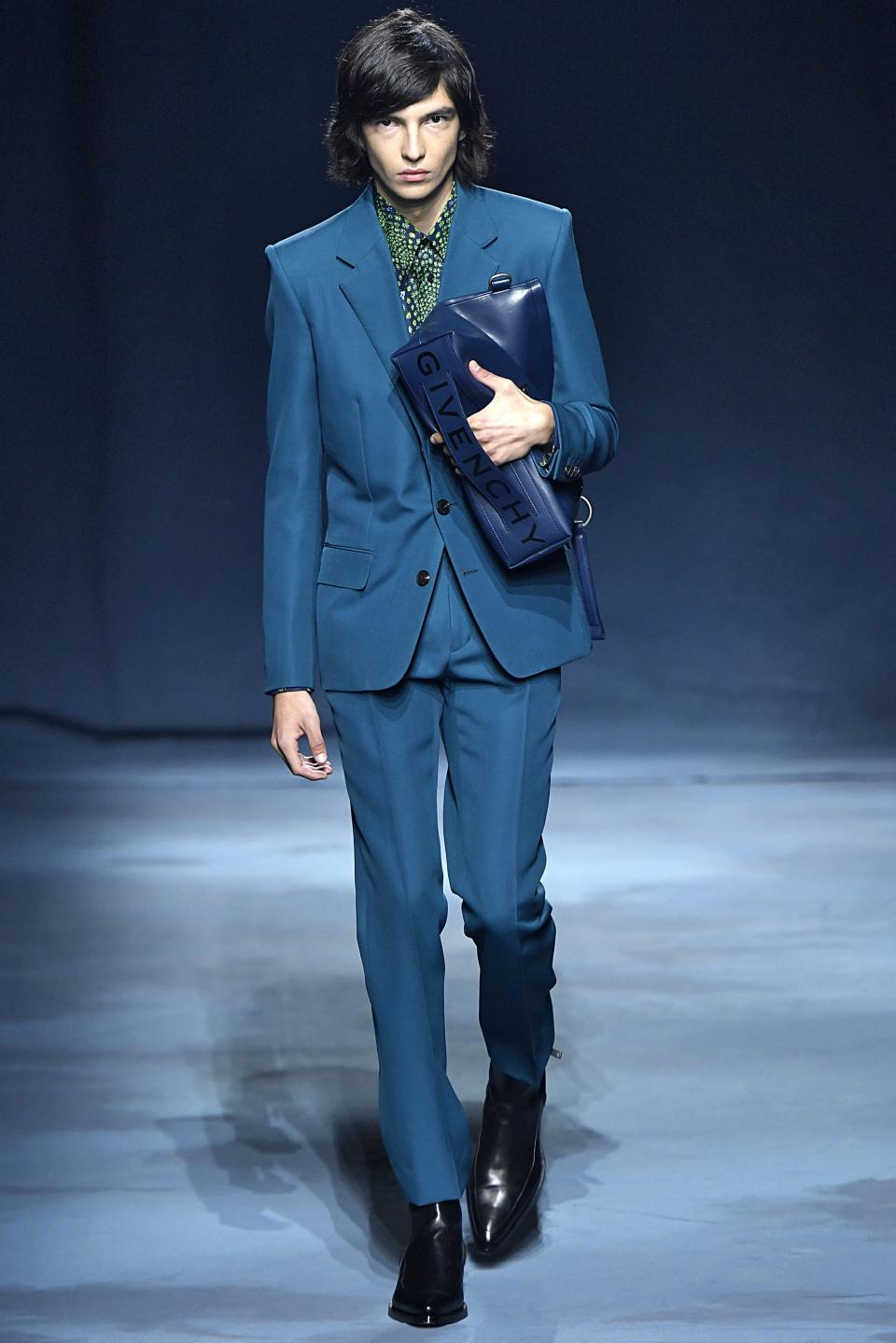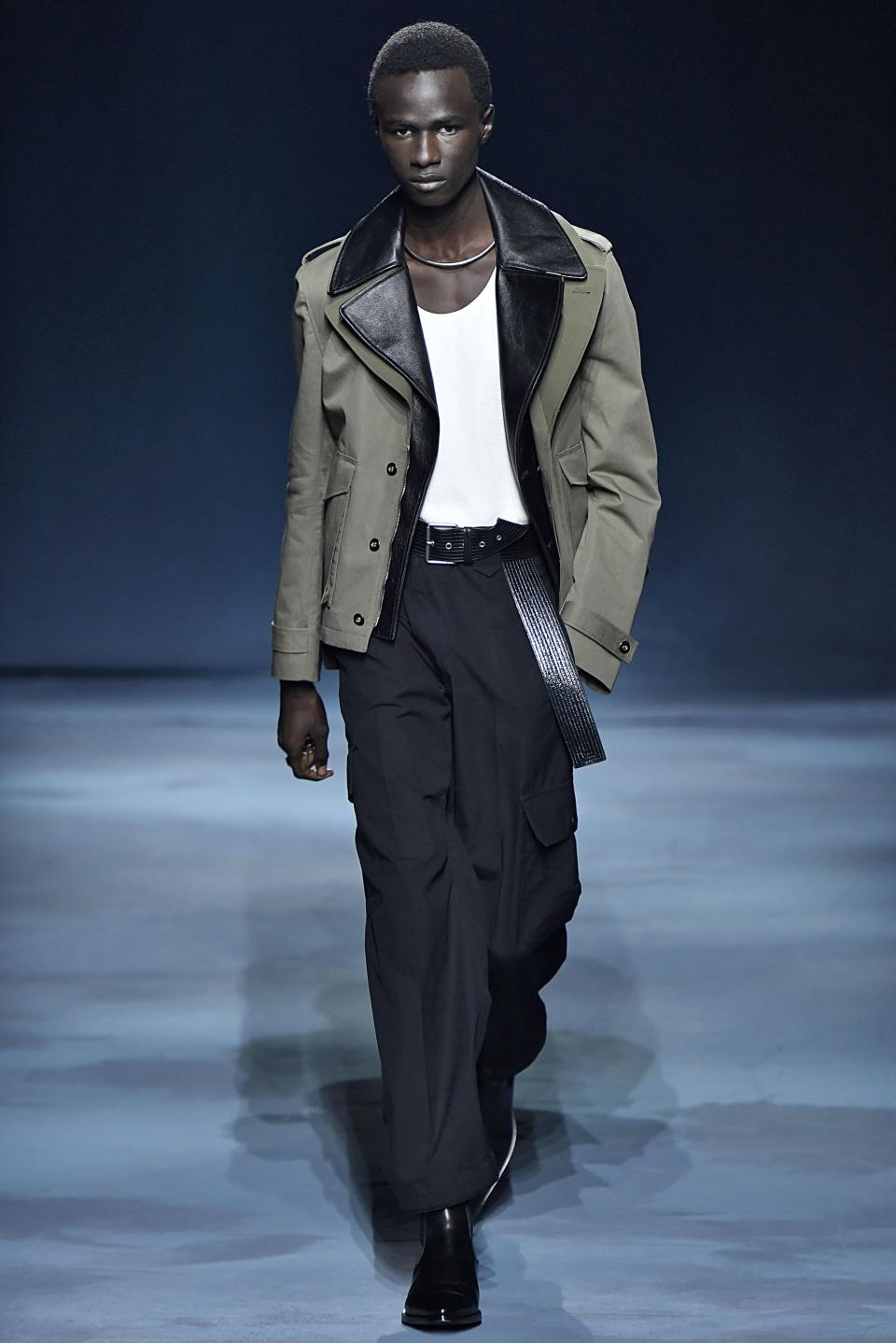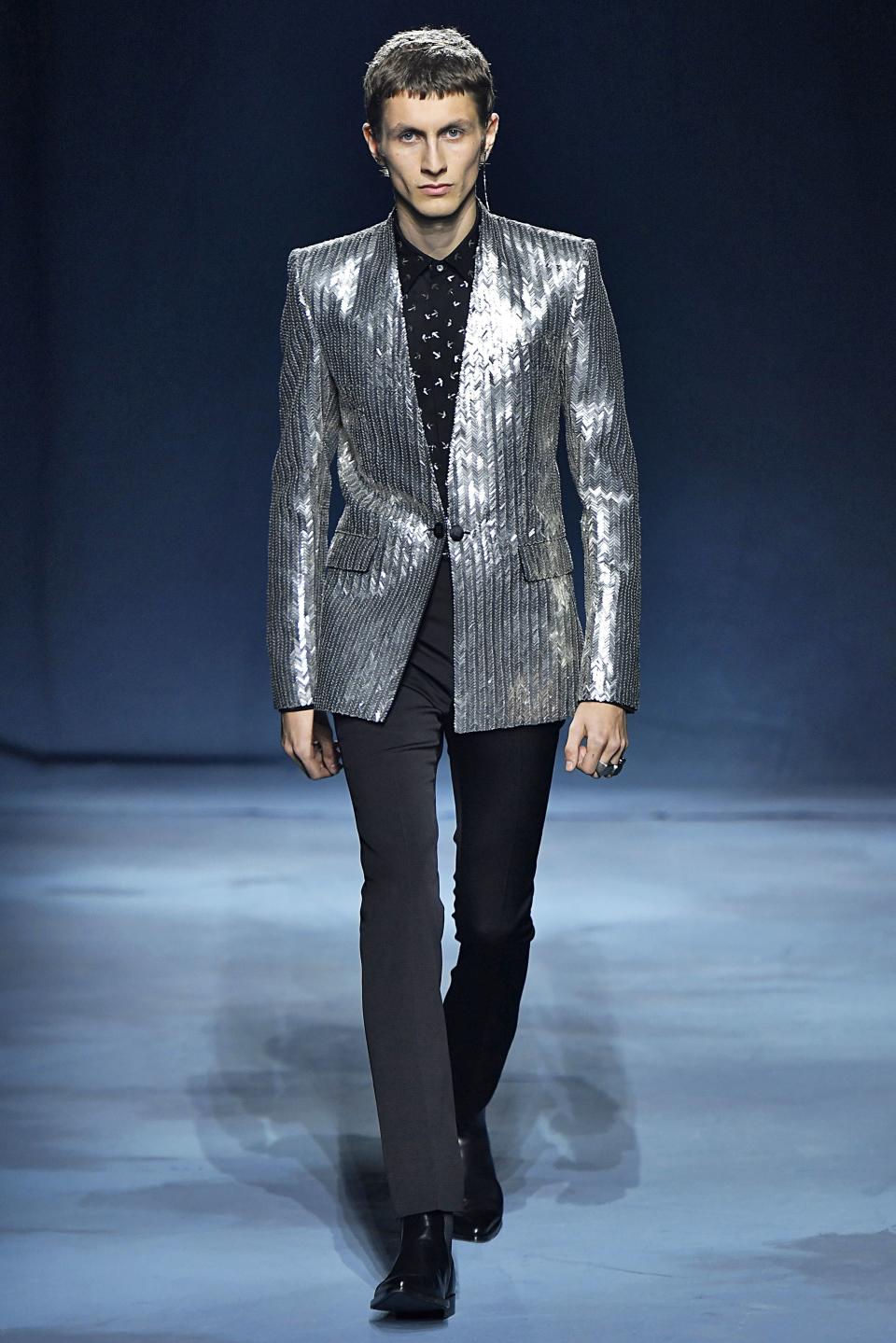Givenchy’s Secret Weapon Is Hitting Her Stride
Getting to the Givenchy Spring/Summer 2019 show, held inside the commanding Palais de Justice, guests followed a single beam of retina-imprinting light through the long expanse between the entrance (where a laser light Givenchy sign the length of ten Cadillac Fleetwoods was hung) and the showspace. The whole thing had a beam-me-up quality, presumably teeing up some element of the show to come (The digital frontier? Space, the final frontier? Poltergeist?). Turns out, it was just a very cool navigational tool. In reality, the showspace, from the floors to the makeshift walls, was covered with a few football fields’ worth of what looked like humble drop cloths. We shouldn’t have been surprised: going against expectations is becoming a calling card of Clare Waight Keller’s.
When calculated by the International System of Units, Waight Keller has been Givenchy’s artistic director for eighteen months. Going by the International System of Fashion, the British designer has been the creative force behind the French brand for three ready-to-wear runway shows, two couture shows (which she brought back to the runway and introduced for guys), and two pre-collection seasons. That amounts to 376 individual looks whipped up for the brand’s male and female customers thus far, a number that doesn’t include the one-off red carpet-bound pieces for the likes of Lady Gaga and Chadwick Boseman—nor one that takes into account the monumental task of crafting Meghan Markle a wedding dress for the world to fawn over. The mind-boggling output is simply what’s expected when you’re the creator-in-charge for one of the biggest luxury brands in the world, especially one you’re trying to reshape.
And yet, Waight Keller doesn’t seem to mind. In interviews and on her personal Instagram feed, her public persona gives off the impression that she considers the unending churn of newness just par for the course and maybe, sometimes, even a little fun? Being at the top of a creative enterprise with massive commercial expectations is demanding but often yields a familiar narrative: the designer as tortured genius. But of the many words one could use to describe Clare Waight Keller and her work over the years, tortured isn’t one of them. (One that is most often used: hardworking.) Her reputation is a far cry from the soundbite-slinging, proclamation-making caricature of a fashion designer, the press-shy aesthete who garners cult-like adoration. Waight Keller stands out because she’s a pedigreed first rate creator who can and does design beautiful, modern, covetable clothes (which are not the same as “clothes”) above all else.

Givenchy : Runway - Paris Fashion Week Womenswear Spring/Summer 2019

Givenchy : Runway - Paris Fashion Week Womenswear Spring/Summer 2019

Givenchy : Runway - Paris Fashion Week Womenswear Spring/Summer 2019
Her handiwork was on display for Spring/Summer 2019, where once again Givenchy’s women and men shared the same runway—and this time, the same clothes. According the the show notes, Waight Keller’s Givenchy couple “mirrors female and male in each other and cross-pollinates their gender characteristics.” The effect being that “properties conventionally comprehended as female or male to morph in a nonchalant approach to gender codes,” which in non-fashion speak means that a chunk of the collection could be worn by either sex. If more and more shows are going coed, why shouldn’t the clothes shown at them follow suit? It’s a proposition that’s extremely now, yet Waight Keller claimed inspiration from Annemarie Schwarzenbach, an early 20th century Swiss writer and photographer whose Wikipedia entry alone warrants a twelve-part Masterpiece Theatre, and the stylish AF twosome that was Lou Reed and Nico.
The collection’s Givenchy-for-all-ness certainly came through in a chunk of the regimental outerwear, trench coats in Air Force blue or off-white gabardine or honey-colored perforated leather. Ditto with most of the tailoring, which came sharp shouldered with a vertiginous peak lapel, a new silhouette born in the house’s couture atelier that was equally effective and powerful on both sexes (particularly a lavender version worn with a complimentary hued dress shirt and white zip ankle boots). There were also men’s-specific three-button suits in high contrast herringbone or royal blue, options ideal for the guy who doesn’t have to wear a suit, but wants to (and has the bank account to afford these). Anchoring the majority of the collection were vaguely militaristic trousers most with self belts and many with cargo pockets, selected for their “gender-non-specific uniformity.” Helpfully, they also just look cool and offer a kind of practical, utilitarian luxury—one that doesn’t always make it onto the runway.
As you might expect from a designer whose resume is stacked with backstory-heavy brands (Chloe, Pringle, Ralph Lauren) the outing was entirely respectful of the house’s DNA (always elegant, almost always unfussy) but not overly reverential. It was also Waight Keller’s most assured men’s ready-to-wear outing for Givenchy yet. These are clothes with a point of view, but that won’t announce their wearer as belonging to any single style tribe. That’s important when you’re selling leather moto vests to guys in Seoul, and also South Beach. The show was also a friendly reminder that a fashion show can subsist on good clothes and bags and shoes—maybe the best boots I’ve seen in a season—worn by beautiful people and not, say, severed heads. While that thinking may not warrant the same flurry of Instagram activity, it’s still quantifiable at the register. And right now, creating refreshingly uncomplicated—but extremely thought through—clothes for real people to wear in real life is about the most unexpected move a top designer can make.


